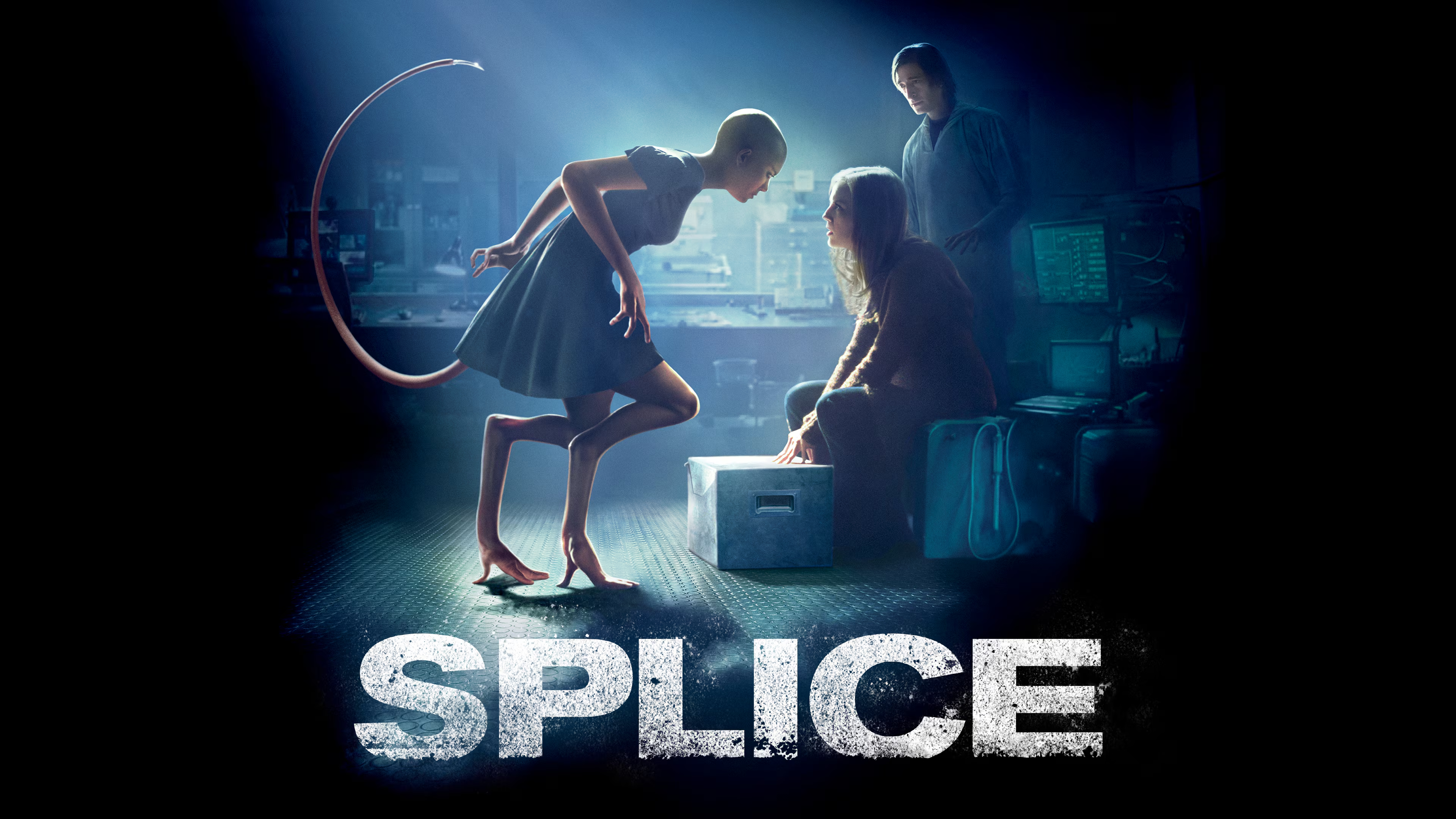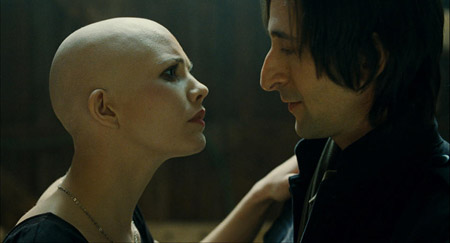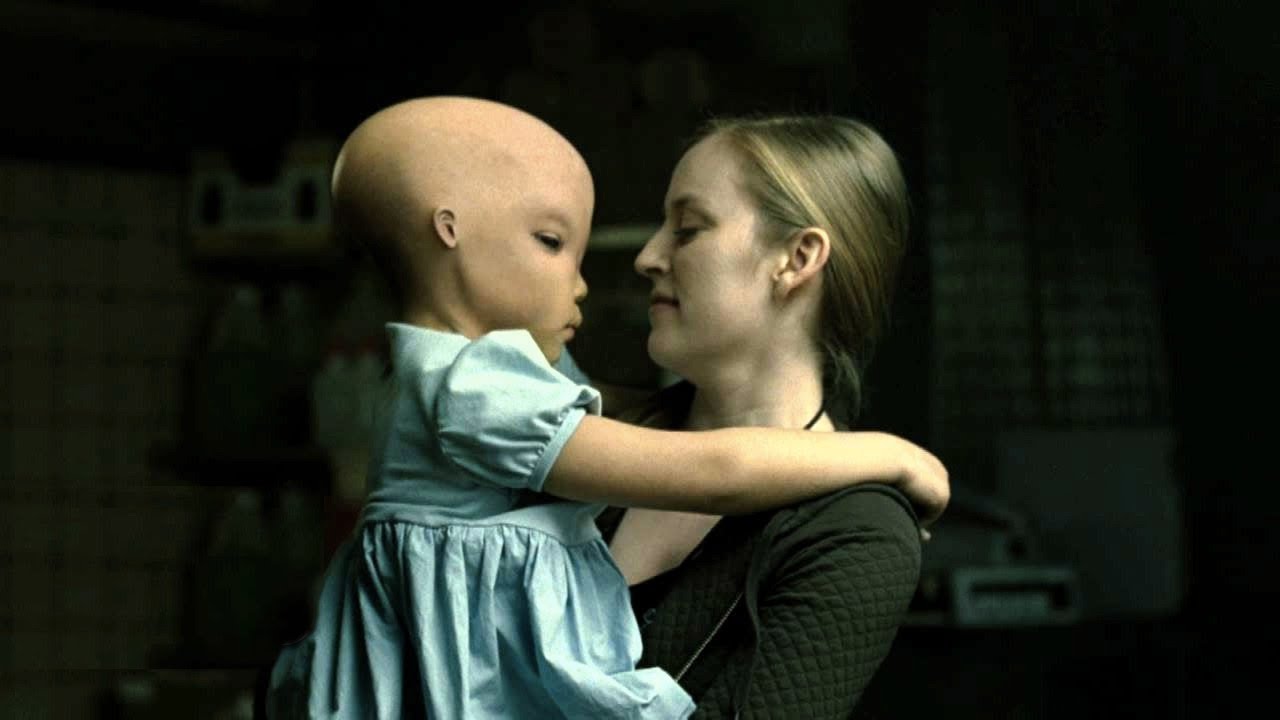Splice (2009)

“Splice” is a 2009 science fiction horror film directed by Vincenzo Natali, a filmmaker renowned for his ability to weave complex and unsettling narratives. The movie takes viewers into the morally ambiguous world of genetic engineering, where cutting-edge science collides with deeply rooted ethical concerns. It stars Adrien Brody as Clive Nicoli and Sarah Polley as Elsa Kast, two brilliant yet reckless genetic scientists who specialize in creating hybrid organisms by splicing DNA from different species. Their work, funded by a pharmaceutical corporation, aims to develop groundbreaking medical solutions. However, their ambition pushes them to cross a dangerous line when they secretly use human DNA in one of their experiments, defying ethical and legal boundaries.
The result of their clandestine project is Dren, a hybrid creature portrayed with striking physicality and emotional depth by Delphine Chanéac. Initially, Dren is a strange, almost alien-looking organism with rapid growth patterns and evolving traits. As she matures, her appearance becomes more human-like but remains unsettling, with features such as wings, a tail, and amphibian-like appendages. Her intelligence grows alongside her physical evolution, revealing a being capable of complex emotions, creativity, and rebellion. The relationship between Clive, Elsa, and Dren is at the heart of the film, exploring themes of parenthood, creation, and control.

Elsa, who initially views Dren as an exciting scientific achievement, begins to project maternal instincts onto her creation, while Clive is more wary, perceiving the moral and practical dangers of what they’ve done. Their differing attitudes reflect the broader debate surrounding the ethics of scientific experimentation and the unintended consequences of playing God. As Dren grows, the dynamic between the trio becomes increasingly strained. What begins as an ambitious scientific endeavor spirals into a deeply personal and terrifying ordeal, as Dren’s behavior becomes more unpredictable, revealing both her animalistic instincts and her capacity for human-like emotions.
The film also delves into the darker corners of human psychology. Elsa’s troubled childhood and unresolved traumas are revealed as she interacts with Dren, drawing parallels between her own upbringing and her role as a creator. Clive, meanwhile, struggles with guilt and fear as he grapples with the ethical implications of their actions. The tension between the two scientists escalates, testing their romantic and professional partnership. This internal conflict adds layers of complexity to the story, making it as much a psychological drama as it is a sci-fi horror film.

“Splice” is notable for its ability to unsettle viewers not only through its eerie visuals but also through the ideas it presents. The design of Dren is a standout feature, combining practical effects and CGI to create a creature that is both fascinating and deeply disturbing. Her appearance evolves throughout the film, mirroring her psychological transformation and serving as a constant reminder of the unnatural origins of her existence. The filmmakers effectively use Dren’s character to blur the line between human and non-human, eliciting both empathy and fear from the audience.
While the movie was praised for its originality and willingness to tackle provocative subject matter, it was also polarizing. Critics highlighted its exploration of themes such as scientific overreach, the consequences of unchecked ambition, and the ethical dilemmas posed by genetic manipulation. However, the film’s final act, which takes a more sensational and shocking turn, drew criticism for veering into melodrama and losing some of the intellectual weight that characterized its earlier moments.
“Splice” ultimately serves as a cautionary tale about the risks of scientific hubris and the unpredictable nature of experimentation without restraint. It challenges viewers to consider the moral implications of genetic engineering and the responsibilities of those who dare to wield such power. By blending science fiction, horror, and psychological drama, the film creates a thought-provoking narrative that lingers long after the credits roll. It stands as a unique entry in the genre, one that is as unsettling for its emotional and ethical undertones as it is for its visceral horror.











